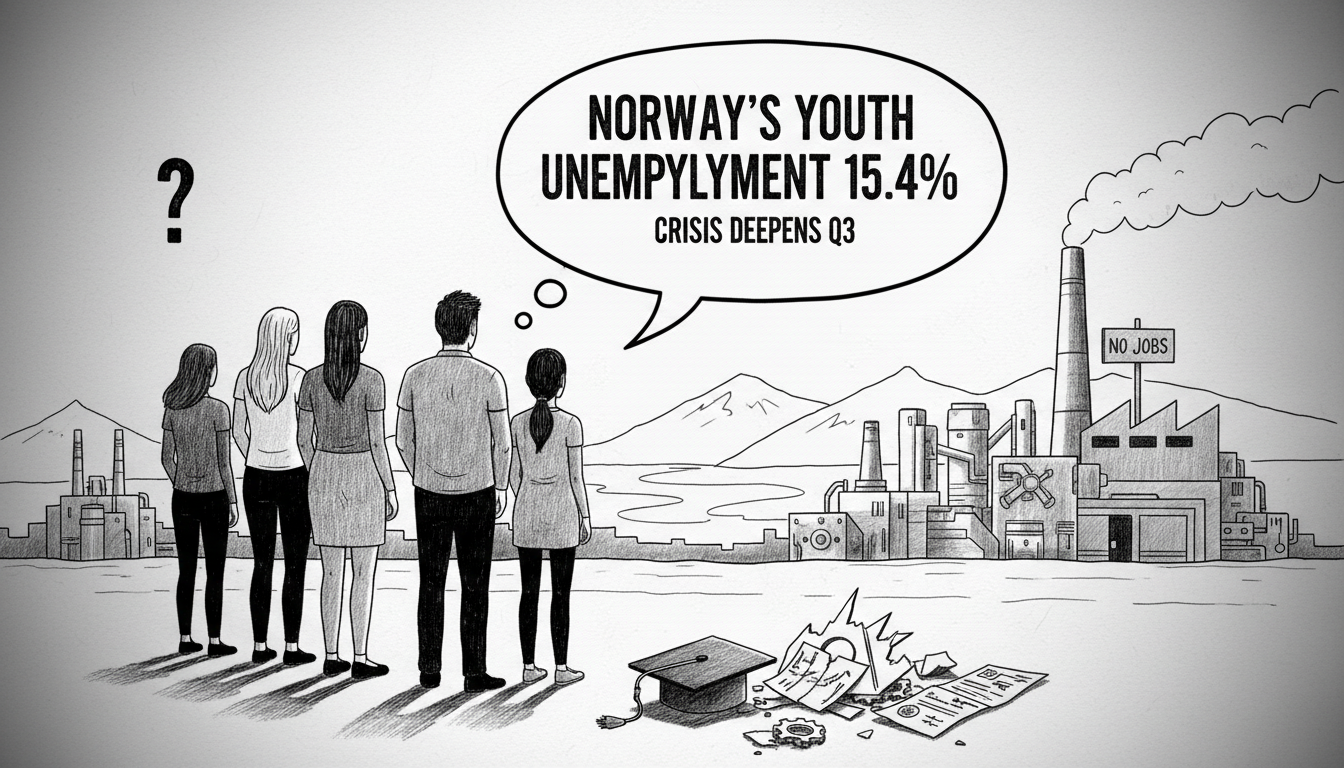Norway faces a hidden crisis beneath its seemingly stable employment numbers. While the overall unemployment rate sits at 4.7 percent, young people struggle like never before. Statistics Norway reports 15.4 percent of people under 25 lack jobs. This marks the highest youth unemployment rate in over fifty years.
The situation approaches levels last seen during the COVID-19 pandemic. Young men face greater challenges than young women. This gap likely exists because more women work in healthcare, where labor shortages persist.
Fewer young people have jobs now compared to last year. More applicants compete for fewer positions. One in five students cannot find part-time work. Research shows these jobs prove crucial for future careers.
The number of young people on disability benefits also reaches record highs. These alarming trends raise concerns about whether current conditions reflect temporary economic pressures or establish permanent changes.
Traditional entry-level jobs disappear without replacement. Norway suffers from acute labor shortages, but not in fields where many young people trained. The country lacks both the right skills and geographic alignment between workers and jobs. An IT developer might live in Fredrikstad while jobs exist in Tromsø.
Some young people relocate for work, but systemic mismatches persist. Employers nationwide need nurses, welders, and electricians. Meanwhile, companies import engineers and IT specialists from countries like India.
Automation eliminates positions in retail, office administration, and case processing. These roles often serve as first jobs for graduates. Other sectors face restructuring and layoffs. The job market floods with experienced candidates.
The result leaves master's degree holders desperately seeking their first professional positions. Many send dozens or hundreds of applications without receiving acknowledgments. This breakdown in employer courtesy signals deeper market dysfunction.
The development creates frustration and risks diminishing hope among young Norwegians. This recipe leads to stress, mental health issues, and broader societal dissatisfaction. A generation without future prospects undermines the social contract itself.
Most Generation Z members followed expected paths. They excelled in school and pursued higher education in seemingly secure fields like IT and finance. Some studied abroad to enhance their appeal. They return home to a job market with no space for them.
These young adults stand at the threshold of independent life carrying massive student debt and limited prospects. Retraining as teachers, nurses, or welders requires substantial time investment.
Young people with immigrant backgrounds face even greater obstacles. They often land at the bottom of application piles unless they apply with Norwegian-sounding names.
Workplace changes accelerate faster than educational systems adapt. Official estimates suggest one in five Norwegian jobs could face automation in coming decades.
Some youth unemployment may stem from temporary economic downturn. The numbers also warn about fundamental shifts in employment structures. Both young people and society must adapt.
The government launched youth initiatives and new programs to increase employment. These measures only work if they create real job opportunities, not just good intentions.
Norway's challenge reflects broader Nordic trends where education systems struggle to match rapid economic transformation. The country must address both immediate job creation and long-term structural alignment between skills and market needs.

